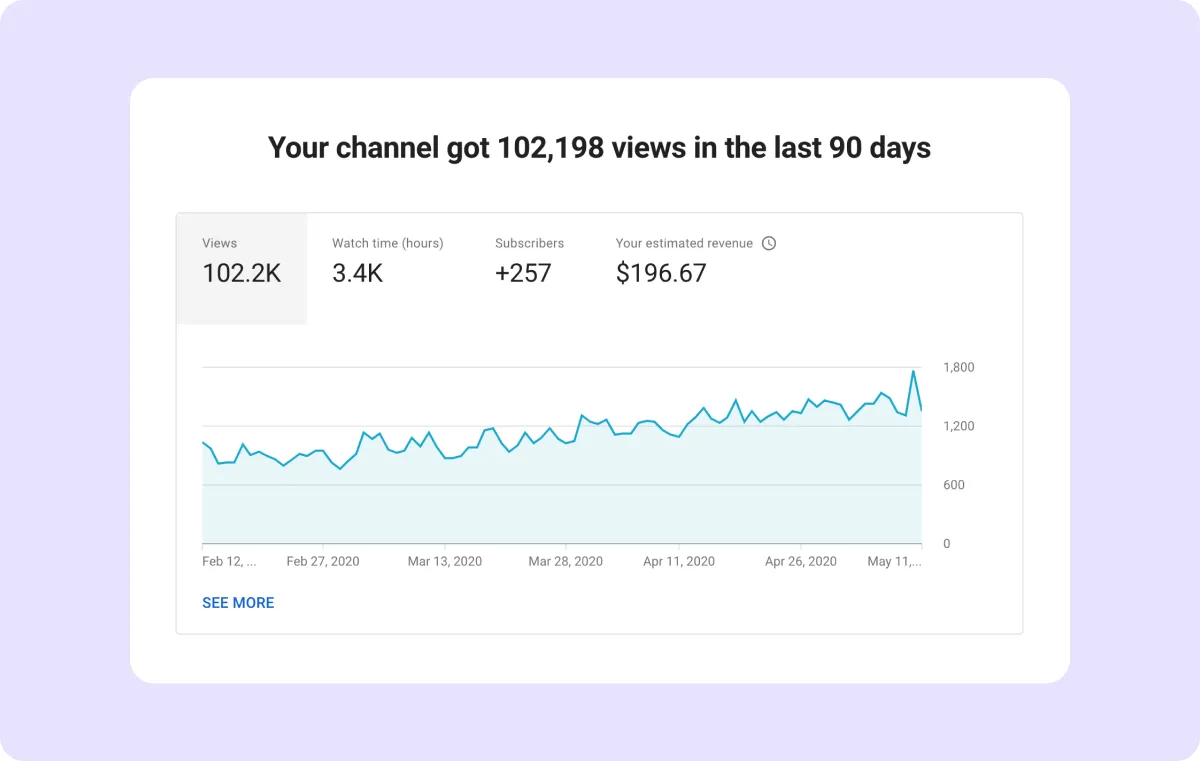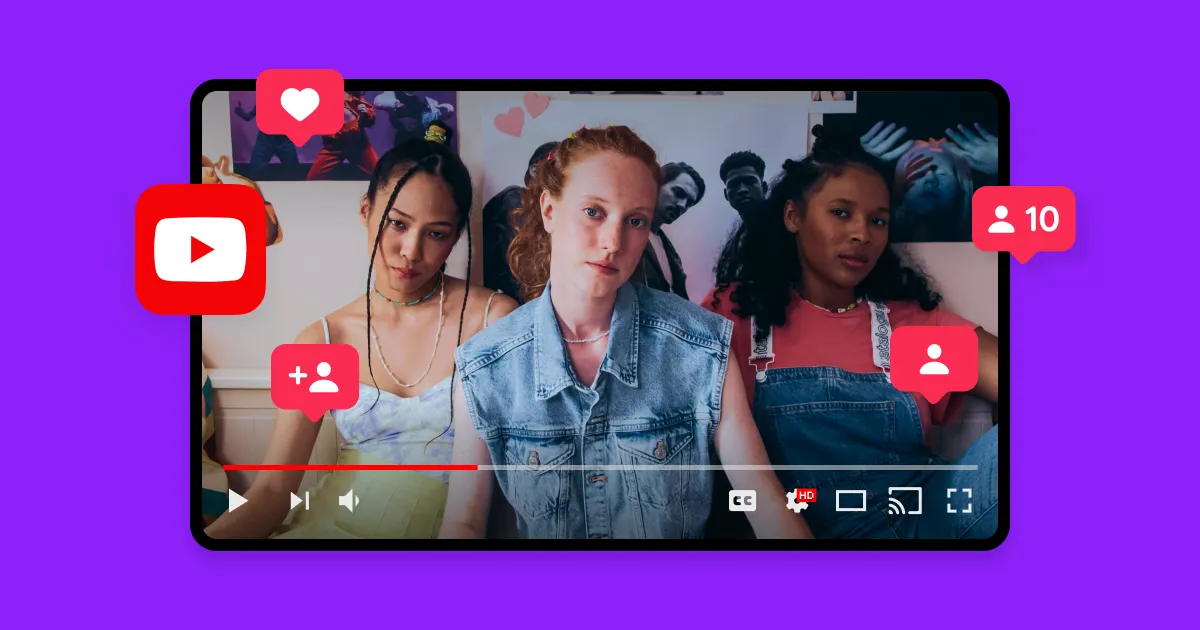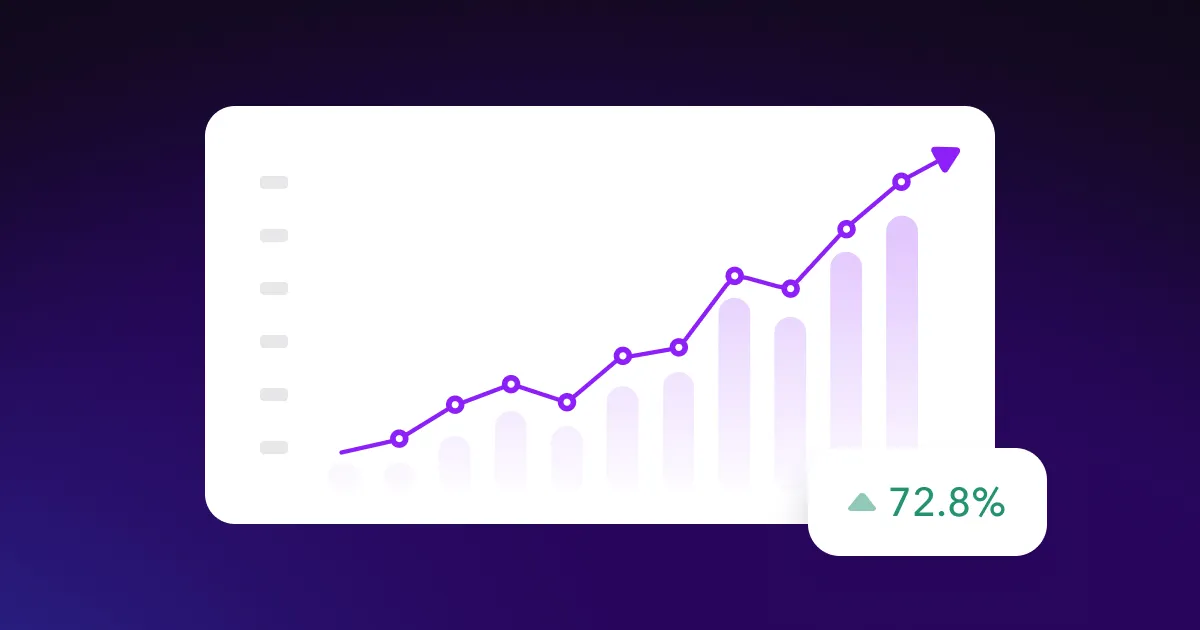Knowing what works for other YouTube creators can help you improve your strategy, but getting meaningful insights for different channels isn’t always straightforward. While you can see basic metrics like views and subscriber numbers, digging deeper into a competitor’s performance takes the right tools and tactics.
Learn how to access YouTube analytics for other channels and turn competitor data into ideas to grow your audience.
What Are YouTube Analytics and Why Is Measuring Them Important?
YouTube analytics are metrics that give creators detailed insights into video and channel performance. They reveal how your audience discovers, engages with, and responds to your content. Understanding YouTube analytics lets you make more informed decisions about your content strategy. Here are the most important metrics every serious YouTube creator should track:
- Watch time — This is the total number of minutes viewers spend watching your content, which makes it a good measure of viewer engagement. YouTube’s algorithm prioritizes channels with longer watch times, so this metric is critical for increasing your visibility in suggested videos and search results.
- Average view duration — This is the average time viewers spend watching a video. It shows where they lose interest, helping you find any weak points in your content and adjust future videos accordingly.
- Click-through rate — This is the percentage of people who click your video after seeing the thumbnail. Even the most compelling content won’t take off if viewers don’t click through.
- Traffic sources — This shows you where viewers discover your videos, including direct search, suggested videos, and external websites. Understanding your traffic sources helps you pinpoint which discovery methods are working best.
- Demographics — This data includes information about your viewers’ age, gender, and geographic location. Knowing the breakdown of your viewership helps you tailor your content to match your audience, like using location data to post at optimal times.
How To Access Your Own Analytics in YouTube Studio

YouTube Studio makes it easy to access your analytics. You can view them at the channel level for overall performance and the video level for specific content insights. Here’s how to do it:
1. Log Into Your YouTube Account
Log in and navigate to YouTube Studio. This is the dashboard for managing your channel, uploading videos, and accessing creator tools.
2. Go to the Analytics Tab
You have two options for viewing your analytics:
- Channel-level analytics — Click “Analytics” from the left-hand menu to see your overall channel performance.
- Video-level analytics — Select “Content” from the left-hand menu, find the video you want to analyze, then click the Analytics icon next to the video to see detailed data.
How To View YouTube Analytics for Other Channels or Creators
You can’t access detailed YouTube analytics for other creators directly through YouTube Studio. Instead, you need tools developed by external companies that compile publicly available data from YouTube channels. Third-party YouTube analytics tools can show you publicly visible metrics like subscriber count, view count, likes and dislikes, and engagement indicators. While you won’t see private data like revenue numbers or audience demographics, you can still gather valuable insights about competitor strategies and content performance.
Here are four options for diving deeper into YouTube analytics for other channels:
1. Social Blade
Social Blade tracks follower and subscriber growth patterns alongside standard metrics like video views and upload frequency. A standout feature is its estimated earnings data, complete with growth projections. This helps you benchmark your channel performance against the most successful creators in your niche.
2. BuzzSumo
BuzzSumo lets you see which content performs best — you can search by keyword, topic, or competitor to find top-performing videos, engagement metrics, and trends. It’s particularly good for spotting what types of titles and formats are gaining traction in your niche.
3. Tubular Intelligence
Tubular Intelligence offers powerful cross-platform content insights. You can search for and filter videos from any major social media platform, track what’s trending and what’s cooling down, and compare video performance over specific periods of time.
4. NoxInfluencer
NoxInfluencer provides comprehensive YouTube channel stats such as subscriber growth, video performance metrics, and detailed engagement data. You can search for influencers by location, category, and audience size to find your most relevant competitors.
5 Tips To Improve Your Video Content Using Analytics Data

YouTube metrics help you uncover what your audience wants and how to give it to them. They’re a starting point for data-driven marketing strategies, allowing you to create content that performs better and grows your channel faster. Here’s how to put them into practice.
1. Study Your Competitors’ Greatest Hits
Look at views and watch time to find the videos with the highest engagement. Put together a competitor YouTube channel analysis by investigating the common themes, topics, or formats that made them successful, then use those elements in your future content. For example, if tutorial videos consistently outperform livestream recordings in your niche, focus more on educational content.
2. Identify the Moment Viewers Click Away
Check audience retention reports to pinpoint where viewers drop off in your videos. These reports tell you which parts of your content are less engaging and could use improvement. For instance, if viewers consistently leave during the intro, work on making your opening more compelling and get to the main content faster.
Captions’ YouTube clip maker helps you turn your long-form content into engaging clips your viewers are more likely to watch to the end. Instead of manually searching through hours of footage, the software finds the parts with the highest viral potential, then turns them into short clips that are ready to share.
3. Track How People Find Your Videos
Learn how viewers find your videos by analyzing your traffic sources. If most traffic comes from suggested views, focus on improving your video titles and descriptions with relevant keywords so you rank higher in search results.
4. Understand Who’s Watching Your Content
YouTube analytics show your viewers’ age, gender, and geographic location, so tailor content to match the preferences and interests of your key demographic. For example, if your audience is mostly women aged 25-34, you might focus on lifestyle topics relevant to that group. Should a large portion of your audience be in a particular time zone, you could post when it’s evening there and people are more likely to watch.
Captions’ AI Video Translator makes it simple to expand your audience by translating your audio into multiple languages and automatically adding subtitles. With the click of a button, you can grow your viewers worldwide.
5. Measure What Truly Connects With Your Audience
Monitor likes, comments, shares, and subscriber growth to understand which videos your audience genuinely loves. High engagement signals that your content is resonating with viewers, while low engagement might mean you’re targeting topics or formats that don’t connect as well.
Upgrade Your YouTube Content Strategy With Captions
The most successful creators don’t just collect data — they act on it. Regularly reviewing YouTube analytics and integrating insights into your content creation process is the key to building a profitable channel.
Captions is an all-in-one platform that helps you turn data into better content. You can use the YouTube video idea generator to create personalized video concepts that align with your audience preferences and trending topics revealed by your data. Then, polish your videos with the YouTube video editor to add transitions, clean up background noise, and translate your content to reach global audiences.
Create high-performing videos easily with Captions.
FAQs
Can YouTubers See Who Viewed Their Videos?
YouTube creators cannot see who specifically views their videos. YouTube Analytics provides aggregate data like total view counts, demographics, and traffic sources but doesn’t reveal individual viewer identities.
What Do My Social Media Engagement Metrics Tell Me?
Engagement metrics show how viewers interact with your content beyond just watching it. These include likes, comments, shares, watch time, and click-through rates. High engagement might mean viewers find your content valuable, while low engagement might indicate your content isn’t resonating as well as it could.
Does Analyzing Competitor YouTube Channel Analytics Help Increase My Subscriber Count?
Analyzing competitor YouTube channel analytics can help increase your subscriber count. By studying what works for others in your niche, such as topics and titles, you can make smarter content decisions. Applying insights to refine your own strategy and create videos that connect with your audience, helping you attract more subscribers over time.









